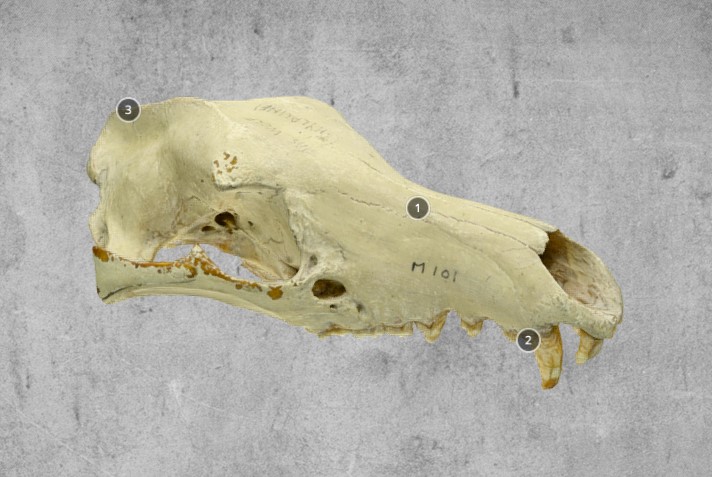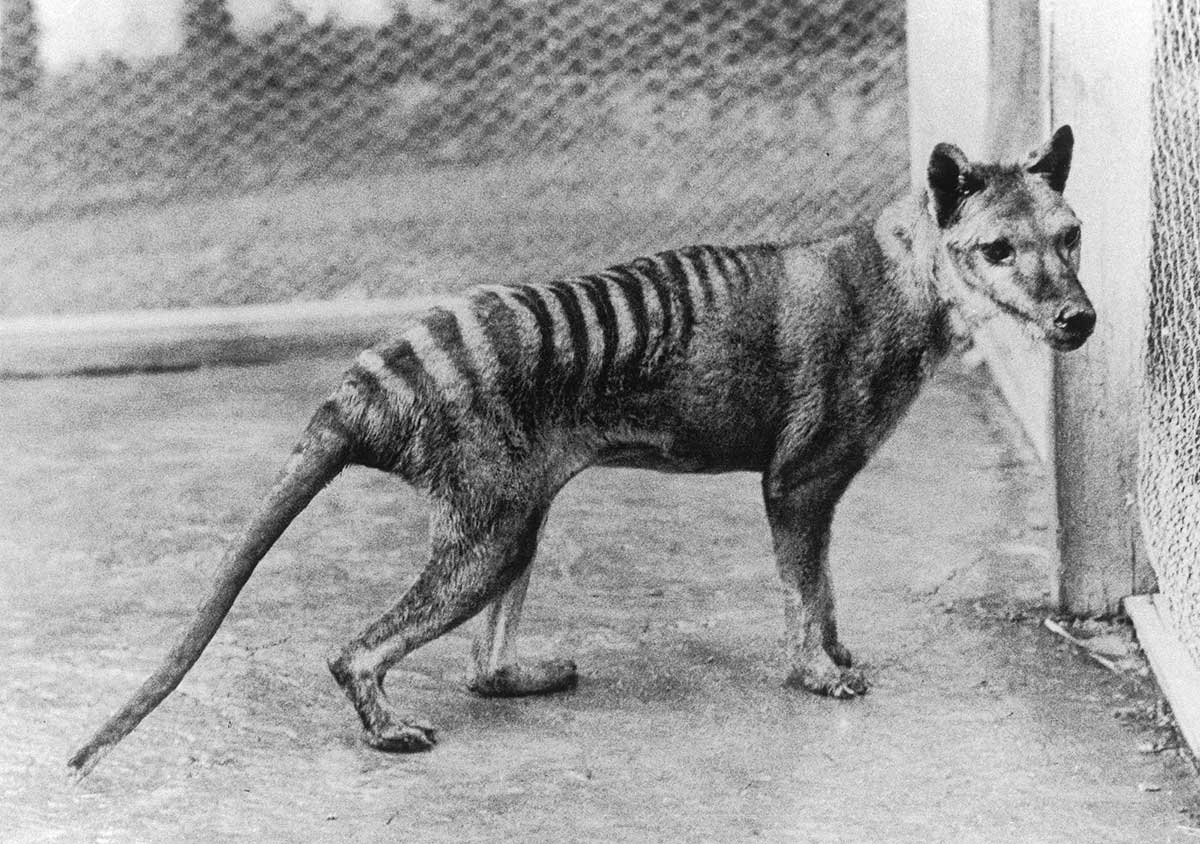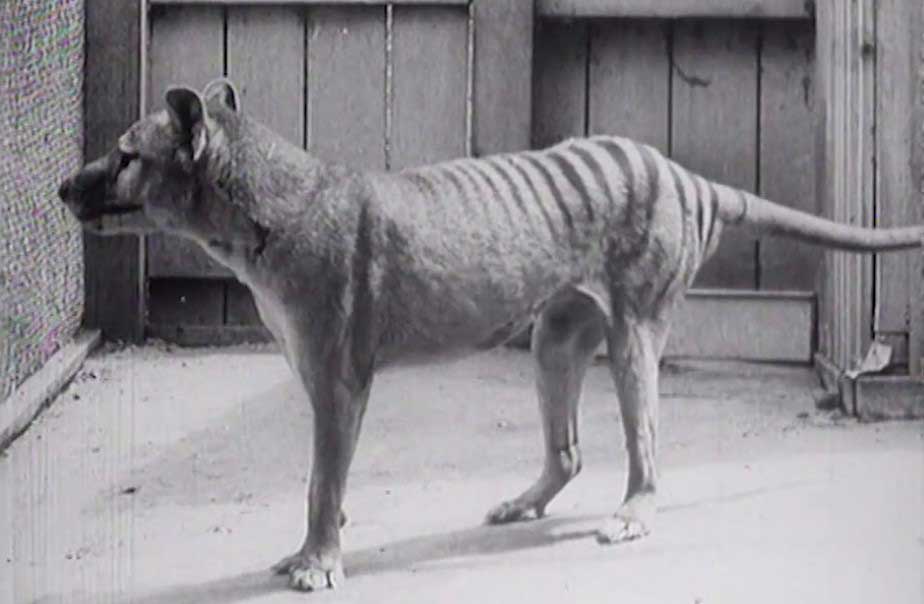Thylacine jaw
Australian National University - Centre for Digital Humanities Research
This jaw is from the cranium of a thylacine, more commonly known as the Tasmanian tiger. The jaw is from the cranium displayed in another 3D image, but has become detached over time. Like the cranium, the jaw is now used at the Australian National University to teach students to recognise bones in archaeological digs. During digs of old sites where people lived it is common to uncover animal bones. These can tell archaeologists a lot about the societies they are studying. Bones can tell us what people ate, what pets or working animals they owned and what animals were living in the area at the time. Unfortunately for archaeologists it is rare to find a complete skeleton. Usually they have to work from tiny fragments of bones, making the job of zooarchaeologists (experts in studying animal remains) a very difficult but very important job!
Details
+ --
Type:













